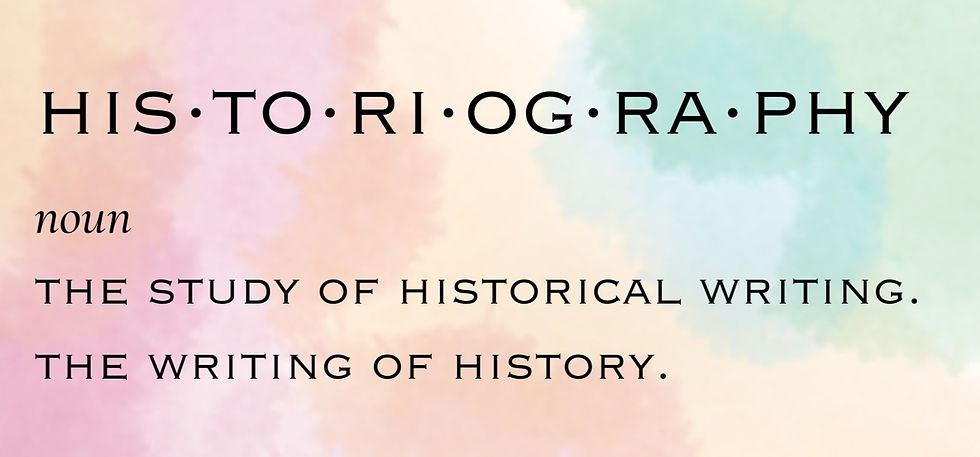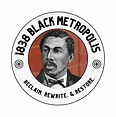We were not all in Moyamensing
- Michiko

- Jun 29, 2023
- 4 min read
Updated: Jul 10, 2023
'HIstoriography' refers to the language, nuances, and implications that shape the historical narrative, not just the facts of history.

For some reason, the general historiography (public encyclopedias) of free Black people in Philadelphia tends to consistently use the words 'low', 'poor', and 'service' a lot.
General historiography also skews towards the belief that all free Black people in Philadelphia lived in Moyamensing throughout the whole 19th century. This idea is so prevalent that I could find it with an easy database search of "Moyamensing Black".
The screenshot of the dictionary entry below assumes that Black people lived in Southwark and Moyamensing and then moved to North Philly and the 7th ward. And this is false.
Black people lived in the City, Kensington, Northern Liberties and Moyamensing and Southwark in 1838 and into the 1840s and up to the 1870s. I'm not stepped in post-civil war history, so I don't know all the details, but after 1870 is when the center of the Black population began to leave the 6th and Lombard 1838 Black Metropolis center. That's when the 7th Ward became a thing.
This entry is historically inaccurate.

Here's the city map with the areas of the city in 1840. See more on that here.

When the The Reverend Charles Gardner and the Pennsylvania Abolition Society conducted the 1838 Census they used these spatial concepts, these districts, to organize counts of people.
So you can see that in their report they add up people by district. Clearly there are more people in the City district (8462) than in the Moyamensing district (2454).
You can also check out our map, based on the original 1838 Census data, which shows institutions, business owners and a heat map to indicate where people lived in 1838. (hint: use the filters to filter by layer).
I think what's happening with historians is that they are thinking of the Black population in the late 1840s and early 1850s. By that time the continued white mob attacks on the Black community had the effect of destabilizing those that were already struggling. Newspaper articles from the time suggest up to 30 Black homes were burned down.
One heavily cited primary source is an 1847 report called "An Afternoon Walk" written by a group of Quakers describing a walk into Moyamensing. They walked down 7th street from probably Arch. When the hit South, then they crossed into Moyamensing. Their purpose was to report on poverty on Bedford Street and other streets to help encourage more help and support for people who were struggling.
They described poverty in such detail that people were shocked. There aren't a lot of primary sources that describe Moyamensing in such detail. Many of their descriptions described Black people, though the article also described white people in poverty. So then as historians picked up this source, it became 'the poverty of Black people in Moyamensing.'

Here's the thing. To get to Bedford street, the Quakers walked right into the heart of the Black Metropolis. They met with Hetty Reckless at the Moral Reform Retreat's shelter and school at the corner of 7th and Lombard. And they would have seen this on their walk down and specifically at that corner:
Substantial brick homes owned by Black people
Passed by 5 Black churches
Passed by Benezet Hall - a hall built by Black Masons and Beneficial Societies
Passed by the first site of the Institute of Colored Youth - that was teaching Greek, Mathematics and Latin at the time.
Multiple Black businesses - including Henrietta Duterte's Funeral Parlor, the first funeral parlor run by a woman in the United States.
A shelter for Black women run by Black women
Of course they knew that what they were explaining was a sub-set of a much larger established Black population. So they didn't bother to explain that in writing because everyone knew that at the time. So they explained what they needed help with - which was the poor folks in Moyamensing.
And that's all that got picked up and is now echoed in multiple places.
Let's Go back to 1838
There are two great sources that describe Black society in the 1838-1842 time period. Neither of them describe the kind of poverty and degradation that occurred by 1848 and that's because both of these sources were written about times before the mob attacks, though The Garies describes in detail how violent the beginnings of the mob attacks were.
They are The Garies and Their Friends, a novel by Frank Webb set in The Black Metropolis in the late 1830s (Webb doesn't give us an exact year) and Joseph Wilson's Sketches of the Higher Classes of Colored Society in Philadelphia, a light socioeconomic analysis of The Black Metropolis written in 1841.
And word on the street is that even after the mob attacks, Black people still moved into the Black Metropolis. There was a flow of Black leadership who moved into the center that was attacked, instead of away from it - and this includes Stephen Smith and William Still.
In fact, one of the halls that was burned down - Beneficial/Benezet hall - was reestablished in 1848 on the same spot. One big 'nope' from the Black community to racist mobs in Philadelphia.
A Dangerous Erasure
When we automatically assume that all Black people in Philadelphia were living in slums across the whole 19th Century, that's what we call a stereotype.
What this thinking does is remove the story of Black excellence while simultaneously erasing the impact of the mob attacks. We cannot discuss Black people's history in the United States in the 19th Century without also discussing the continual cycle of rising up and getting attacked for it. Oppression is part of the story.
But so is Black excellence, Black economic cooperation, and Black civilization building that was so viciously attacked.
Our thinking is in line with LaGarret King. Here we talk about it all. This sterotype we are uncovering is a result of analyzing Black history without considering all the axis in the framework below, particularly without considering Power, Oppression & Anti-Blackness.
Check out and consider the whole framework below.











